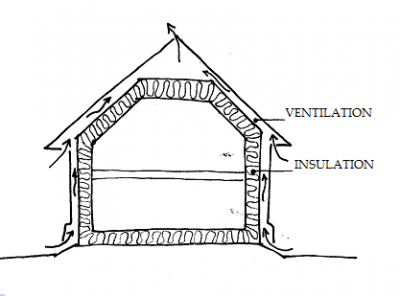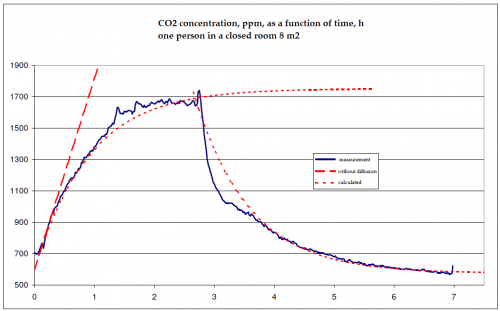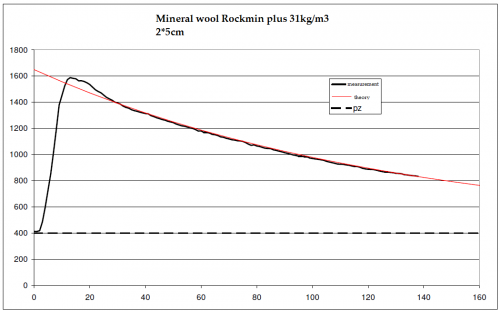Ventilation
Since the very beginning of the company, we have built houses with the so called breathing walls, so with the diffusion resistance as small as possible, i.e. resistance to permeation of gases. It was a bit against the mainstream trends. Laboratory tests have confirmed the accuracy of our choices. If construction partitions have, as a whole, small diffusion resistance, then the role of diffusion to ensure proper air quality is very important. The decisive factor is the resistance to the diffusion of carbon dioxide. We carried out its measurements for both the various construction materials, in laboratory, as well as for all partitions and rooms in built houses. The microclimate in our houses has always had a very good reputation, but now we have experimental data on this.
Our study confirmed the thesis that the gravity ventilation required by regulations is very chimerical, runs unevenly, sometimes with an excess unnecessarily cooling down the house, and at other times completely does not fulfil its task. In older buildings it was supported by leaks in windows, but the current fashion for their sealing seriously affects the quality of internal air, so it takes place with a detriment to health of the lodgers. The measurements show that through the diffuse ventilation, our houses do not have this common shortcoming of today's construction.
To minimize diffusion resistance all the external partitions of our houses are built like a tent with flysheet: they have their facade layers moved away and the inner ventilation gap consistently drawn from the base to the roof ridge.

ventilation system of external partitions
The "breathing walls' function a bit like the recommended heat recovery units in passive house. Diffusion processes are propelled in this case by a natural differential pressure of carbon dioxide and oxygen indoors and outdoors, consequently, this process does not require any additional propulsion, as in the mechanical heat recovery units. The carbon dioxide penetrating outside transfers its energy, resulting from a higher temperature, to the cool oxygen molecules flowing inside. As a result, the whole unit works as a nano-recovery unit of a large area and 100% efficiency, because energy transfer process takes place at the atomic level.
It is worth noting that the idea of building external partitions adopted by us is modeled on the Nature. Animal furs also combine high thermal resistance with negligible diffusion resistance.
Measurements of CO2 diffusion through building partitions performed in the laboratory of Dworek Polski.
The first series of experiments consist of the study of changes in the concentration of CO2 in confined spaces in houses built by us, characterised by a low diffusion resistance of external partitions (timber frame filled with wool, lack of vapor barrier, barrier to internal ventilation). The second series of experiments consist of the study of changes in the concentration of CO2 in selected building materials. Below, two examplary measurements are presented.

In the first part of the experiment the person stayed in the room, i.e. carbon dioxide was being supplied. The second part is a state without a man, that is, without a supply of CO2. The red, dashed line on the left shows what would be the concentration of CO2 in the first phase, if the room was completely sealed, i.e. if the impact of diffusion was neglected. Accordingly, in the second phase, the concentration would be constant.
Level of an asymptote in the first part is very interesting - about 1750 ppm. This means that in such a small space, even when it was completely devoid of air exchange, carbon dioxide concentration only slightly exceeds the standard level.

Pressure drop of carbon dioxide in the sealed measurement chamber, whose upper surface was made of mineral wool. Time - minutes, CO2 concentration - ppm.
